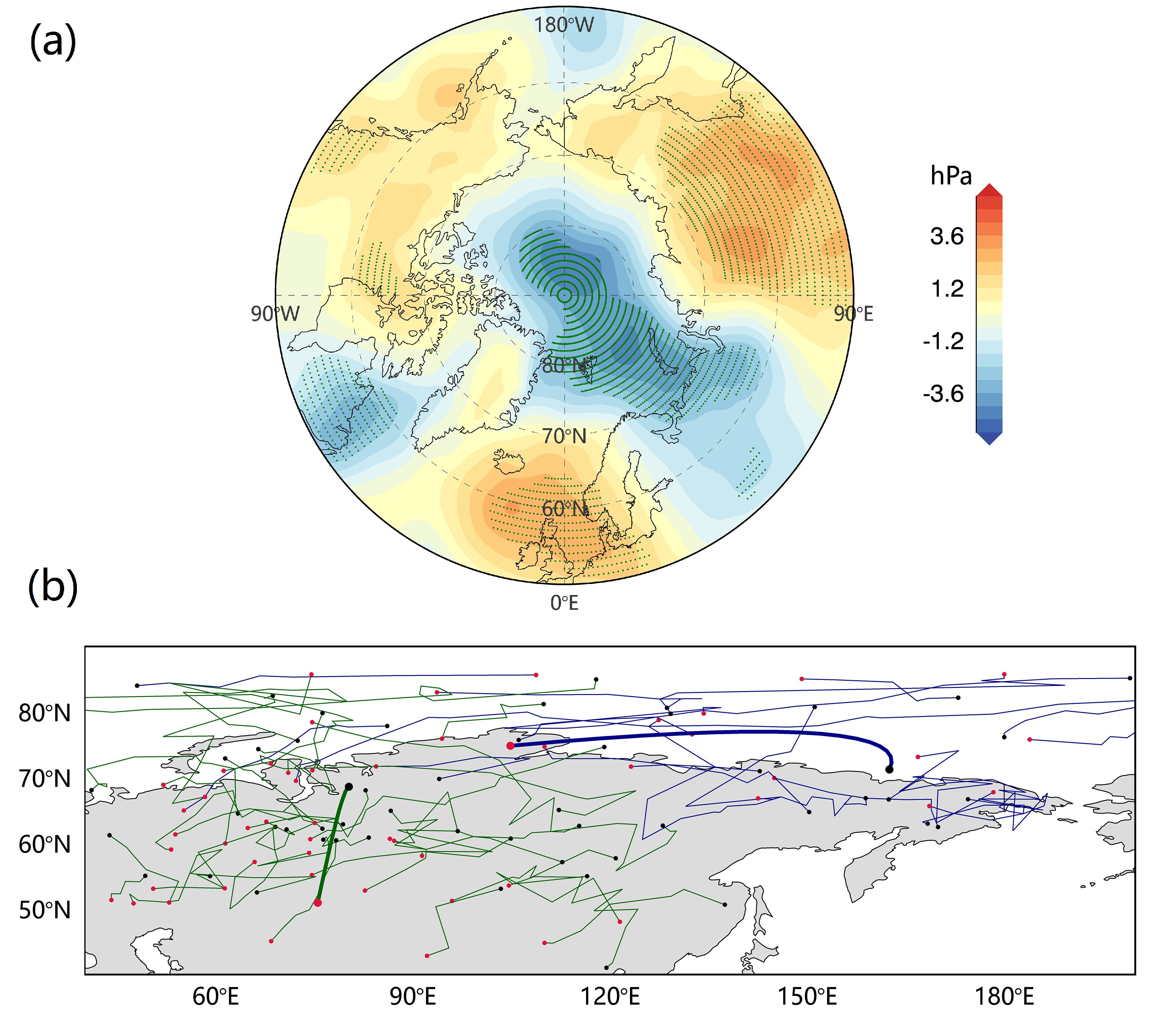Atmospheric water vapor and energy transport play an important role in the Arctic climate. Changes in atmospheric energy and water vapor influx to the Arctic would have a significant impact on the interannual variations and long-term trend of sea ice through a variety of mechanisms.
Recently, the research team led by Prof. HUANG Haijun from the Institute of Oceanology of the Chinese Academy of Sciences (IOCAS) provided new insight into the impact of atmospheric moisture and energy transport on sea ice loss through a case.
The study was published in The Cryosphere on Mar. 31.
Satellite observations show an unprecedented reduction in sea ice extent (SIE) observed in July 2020 since 1979, especially in the Eurasia shelf seas including the Kara, Laptev, and East Siberian Seas. Based on reanalysis and modeled sea ice thickness, researchers suggest that anomalously high advection of energy and water vapor prevailed during spring 2020 over the regions where conspicuous sea ice retreat occurred in the following July. The convergence of the transport increased the temperature and specific humidity of the local atmosphere. The enhanced greenhouse effect thereby led to strengthened downward longwave radiation plus turbulent fluxes at the surface, which initiated the earlier melt onset of sea ice in the study area. After the melt commenced, the enhanced net solar radiation absorbed by the ocean-ice system produced an accelerated decline in SIE through the ice-albedo feedback.
A key driver of the anomalous high transport of the total energy and moisture during spring 2020 was a persistent atmospheric pattern, featuring unusually low sea level pressure (SLP) over the north pole which extended through the Barents-Kara Sea to Eurasia and unusually high-pressure centers over Eastern Siberia and the Norwegian Sea. Cyclones served as another important carrier of the large energy and moist fluxes into the study area.
"In general, the typical trajectories of the synoptic cyclones that occurred on the Eurasian side in spring 2020 agree well with the path of the intensive total energy and water vapor transport. Besides, anomalously frequent and intense cyclones in the Arctic during spring 2020 coupled with large-scale atmospheric circulation, further strengthened the cyclonic wind and ice motion, which could lead to extensive sea ice melt through the large formation of the cracks," said Dr. LIANG Yu, first author of the study.
"This study sheds some light on the regulation and mechanism of atmospheric water vapor and energy transport on sea ice variations, and helps deepen the understanding of the atmospheric-sea ice interaction in the Arctic under the background of climate warming," said Prof. HUANG.

Fig. 1 Anomalies of the vertically integrated northward (a) moisture flux and (b) total energy transport averaged over the spring months (April-June) of 2020, and vertical cross-section of zonal averaged (c) air temperature as a function of latitude and pressure level spanning the regions with significant energy and moisture convergence. (Liang et al., 2022).

Fig. 2 (a) Spatial patterns of SLP anomalies during April to June 2020 and (b) Poleward cyclones detected in the main entry channels (green thin line, 45° E-120° E and 40° N-90° N) and all cyclones occurred in the regions intersected with the route after the fluxes entering Arctic (blue thin line, 45° E-15° W and 65° N-90° N) during spring (April-June) in 2020 and their typical trajectories (thick green and blue lines). Red (black) dots represent the position of the genesis (lysis) of cyclones. (Liang et al., 2022).
Liang, Yu, Bi, Haibo*, Huang, Haijun*, Lei, Ruibo, Liang, Xi, Cheng, Bin, and Wang, Yunhe. (2022). Contribution of warm and moist atmospheric flow to a record minimum July sea ice extent of the Arctic in 2020. The Cryosphere, 16, 1107-1123.
LIANG Yu, HUANG Haijun
Institute of Oceanology
E-mail: liangyu@qdio.ac.cn; hjhuang@qdio.ac.cn
(Editor: ZHANG Yiyi)
|
|

Address: 7 Nanhai Road, Qingdao, Shandong 266071, China
Tel: 86-532-82898902 Fax: 86-532-82898612 E-mail: iocas@qdio.ac.cn


